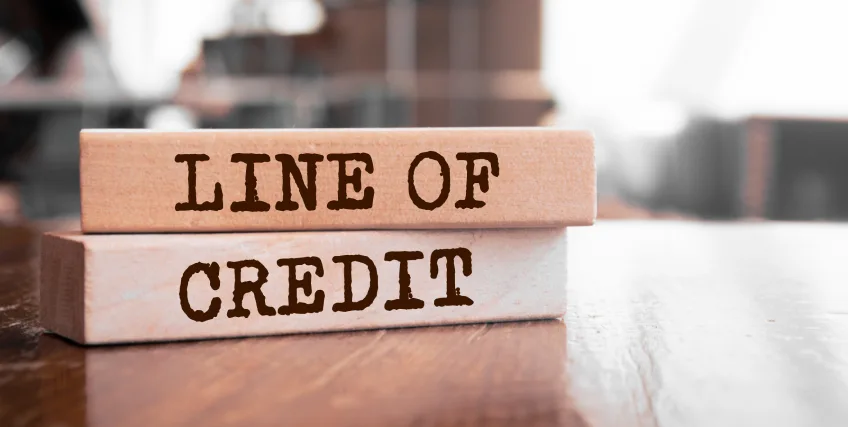Using a Line of Credit for Small Business During Seasonal Sales Slumps
August 20, 2025 | Last Updated on: August 20, 2025

Navigating the complexities of running a small business can be challenging, especially when facing the unpredictable ebb and flow of sales brought on by seasonality.
Many ventures, whether retail shops, landscaping companies, restaurants, or service providers, experience significant fluctuations in revenue at different times of the year.
Employing a strategic financial tool like a line of credit for a small business can be the difference between simply surviving the off-season and thriving year-round.
Understanding Seasonal Variability in Small Business
Almost every industry experiences some level of seasonality, yet in some small businesses, consumer demand fluctuations are severe and cyclical. Lawn care companies, ice cream vendors, retail stores, and holiday businesses often experience sales surges during peak months, followed by precipitous declines soon after. Navigating these revenue roller coasters requires careful planning and access to flexible capital.
Traditional sources of business funding may not support the cyclical nature of seasonal businesses. Fixed-rate loans typically require a lump sum payment that must be reimbursed with interest at the beginning, which is not necessarily suitable during times of fluctuating cash flow. A small business line of credit is designed with flexibility, where entrepreneurs can borrow funds precisely when required and repay it based on their terms.
What Is a Line of Credit for Small Business?
A line of credit for small business is a revolving credit facility that allows you to draw cash up to a credit-approved amount. Unlike a term loan, where you borrow the whole amount at once, a line of credit allows you to draw what you require. You only pay interest on what you borrowed and not on the whole approved loan amount.
This financing tool is used like a credit card: money is borrowed, reimbursed, and borrowed again. Its greatest asset is flexibility. During lean-selling periods, such as after holidays or before summer impulses, businesses are able to tap into their line of credit and fund operating costs, inventory purchases, or payroll, and repay when sales pick up.
How a Line of Credit Works for Small Businesses
The business line of credit works with banks and other lenders that extend a variety of lines of credit. A secured line of credit is backed by collateral, such as inventory or equipment, reducing the lender's risk and possibly his rates of interest. An unsecured business line of credit does not require assets to support it but often involves higher rates or lower limits.
If approved, a company may access the money as business needs. If your bakery slows down in a predictable fashion each January and February, the line of credit for small business can be tapped again and again during those months to pay suppliers and staff. During busier times in the spring, the borrowed money can be repaid, restoring your available credit limit.
This cycle enables business owners to maintain operations smoothly, not cutting costs to the extreme, laying off employees, or disappointing suppliers.
The Critical Role During Seasonal Sales Slumps
Seasonal declines in sales pose special difficulties for small companies, from depleted cash reserves to troubled relations with suppliers and employees. One tempting source of line of credit for small business is a major weapon in covering revenue gaps, guaranteeing access to working capital at the exact times it's required.
Borrowing just against savings is risky, one bad year could drain the funds, with minimal leeway if the next depression occurs earlier than expected. Likewise, taking out short-term business cash flow loans or other short-notice credit may be rushed and expensive, especially if negotiations with lenders have not yet occurred.
A pre-approved line of credit for small business, with its availability always assured, engenders confidence and personal guarantees business continuity even under challenging circumstances.
Advantages Over Other Seasonal Business Funding Options
There are a number of financing options for seasonal businesses, including term loans, business credit cards, merchant cash advances, and invoice factoring, among others. A line of credit for small business, however, has specific benefits, especially for those with cyclical patterns of cash flow.
First, lines of credit are, by their nature, flexible. Money can be used for any business expense, rent, inventory, marketing, or payroll and borrowing is not confined to a single drawdown. Interest is paid only on the drawn-down amount, so it is a less expensive option than term loans with set repayment terms.
Business credit cards provide comparable benefits but typically have higher interest rates and lower credit lines. Invoice factoring and merchant cash advances are fast but frequently involve steep fees and a lack of transparency. The line of credit for small business is differentiated by its blend of ease of access, cost containment, and customized support for seasonal business necessities.
When to Use a Line of Credit for Small Business
Timing is all, so small business operators must get a line of credit while the economy is still growing, not once a sales downturn is realized. Lenders will approve of you on the strength of your business and financial record, both of which can be weakened during poor periods. By securing financing in advance, you're in a better negotiating position and have built a cushion when your finances are healthy.
Use your line of credit for small business when inventory must be restocked ahead of the busy season, when bills come due before incoming revenue is realized, or to invest in marketing campaigns to draw in off-season clientele. Flexibility ensures you’ll always have funds available, restoring stability to operations and confidence to long-term planning.
Managing a Line of Credit Responsibly
Access to a line of credit for small business is only as beneficial as your management of it. Treating the line as “free money” can be tempting, but discipline is essential. Draw only the amounts required to bridge cash flow gaps and prioritize repayment as soon as sales rebound. Maintaining low utilization and a positive repayment record will also improve your business credit score, which can pave the path to larger credit lines and better loan terms in the future.
Do not routinely use the credit line as a long-term loan. If you are continually at the credit limit and only making minimum payments, it may be time to revise your business model or consider an alternative form of finance.
How to Qualify for a Line of Credit for Small Business
Eligibility requirements vary among lenders, but most banks and online lenders will review the following for a line of credit for small business:
- Time in business: Most will insist on at least 6-12 months of business running.
- Revenue: Lenders will analyze monthly revenue and annual revenue to see whether you can meet debt repayment.
- Credit score: Business and individual credit scores are significant.
- Collateral: For a secured credit line, an asset may be necessary.
Online lenders are less demanding than banks, but it comes at a price. Having prepared accurate financial statements and being transparent about your business being seasonal are steps to enhance your chances of approval.
Integrating a Line of Credit into Your Financial Strategy
Adding an accurate line of credit for small business to your overall financial plan is a necessary move for any business with level sales fluctuations. Utilize the following ways to make the most of it:
Implement strict standards of use, employing it only for mission-critical expenditures or growth initiatives. Phase draws and repayments in harmony with primary seasonal sales cycles, keeping outstanding balances under control.
Leave your lines of communication open with your lender. If your finances improve, request an extension of the credit line or improved terms. If you're anticipating a lean period, discuss early with your lender the possibility of restructuring or payment relief options; most lenders prefer to know ahead of time.
Lastly, avoid substituting good business planning with the use of a line of credit. Plan your budget by implementing sales forecasts and analysis, eliminating the necessity of borrowing too much and incurring unnecessary debt.
Comparing Short-Term Cash Flow Loans to Lines of Credit
Small business owners would generally balance a line of credit for small business with other products that are designed to handle cash crunches, such as short-term business lending. Term loans serve effectively for standalone requirements, such as equipment purchases, but they lack flexibility in terms of repayment.
A line of credit, however, can be drawn and reimbursed again and again, the ideal for unexpected cash requirements generated by slow-paying customers or other unexpected expenses. Short-term business loan options are perhaps warranted, but lines of credit are best reserved for managing the cyclical and recurring nature of seasonally slower periods.
The Impact of Technology and Online Lenders
The landscape of business financing is changing rapidly, especially for lines of credit. Fintech innovations allow for easier applications, faster approvals, and transparent fee structures. Many online lenders offer lines of credit for small business with minimal paperwork and instant access to funds, though at potentially higher costs than traditional banks.
These new lenders often base decisions on real-time cash flow data, integrating seamlessly with accounting software and business bank accounts. This is especially useful for seasonal business financing, as lenders can more accurately understand and accommodate your unique cash flow patterns.
Conclusion
Seasonal sales slumps are a reality for many new businesses, but they don’t have to threaten your stability or limit your growth. Establishing a line of credit for small business tailored to your needs is one of the most reliable strategies for enduring lean months and preparing for future success.
With careful planning, responsible borrowing, and a commitment to financial discipline, you can turn seasonality from a liability into an opportunity, keeping your business vibrant and resilient regardless of the calendar.
By understanding your financing options, leveraging the benefits of a line of credit, and maintaining open communication with lenders and advisors, your small business will be better equipped to weather any seasonal storm and capitalize on every upturn.
FAQs About Line of Credit for Small Business
When should a business use a line of credit?
A revolving line of credit is ideal to bridge cash flow gaps, especially for businesses with seasonal sales or slow receivables. It can also fund unforeseen expenses, giving you quick access to funds after credit approval, without the need to apply for a new loan. Funds can be transferred to your business checking account for quick access.
Can lines of credit be used at the point of sale?
Point-of-sale (POS) financing enables consumers to utilize credit at the point of checkout. It can be in the form of credit cards, unsecured loans, or a revolving line of credit, which extends quick credit approval to allow one to make purchases on the spot.
What is the downside of a line of credit?
Although a line of credit offers flexibility, downsides include the temptation to overspend due to ease of access, lowered interest rates, and overlooked monthly payments that can harm your credit rating. If the line is real estate-secured, default could put your property at risk.
What is a seasonal line of credit?
A revolving line of credit is seasonal to help businesses cover expenses during periods of slow sales. The funds are deposited into your business checking account so that you can meet obligations on a timely basis. The credit facility is renewed annually after the lender reviews the credit approval and credit history, by analyzing your creditworthiness.
Is it worth getting a business line of credit?
A line of credit can increase cash flow, typically has more liberal credit approval than other financing, and enables the development of lender relationships. Some lines of credit, nonetheless, carry fees and require short repayment terms with installment monthly payments.
Frequent searches leading to this page
Term Loans are made by Itria Ventures LLC or Cross River Bank, Member FDIC. This is not a deposit product. California residents: Itria Ventures LLC is licensed by the Department of Financial Protection and Innovation. Loans are made or arranged pursuant to California Financing Law License # 60DBO-35839




